Korea in springtime is a beautiful sight to behold. Whether you choose the enchanting Bukhansan National Park or the serene view of Changdeokgung Palace and Juknokwon Bamboo Forest, you'll find yourself captivated by the lush greenery, colorful flowers, and historical landmarks.
During this season, you'll have the chance to experience different festivals in different parts of the country. From the famous Fire Festival on Jeju Island to the Strawberry Festival in Nonsan, there's always something for everyone to enjoy.
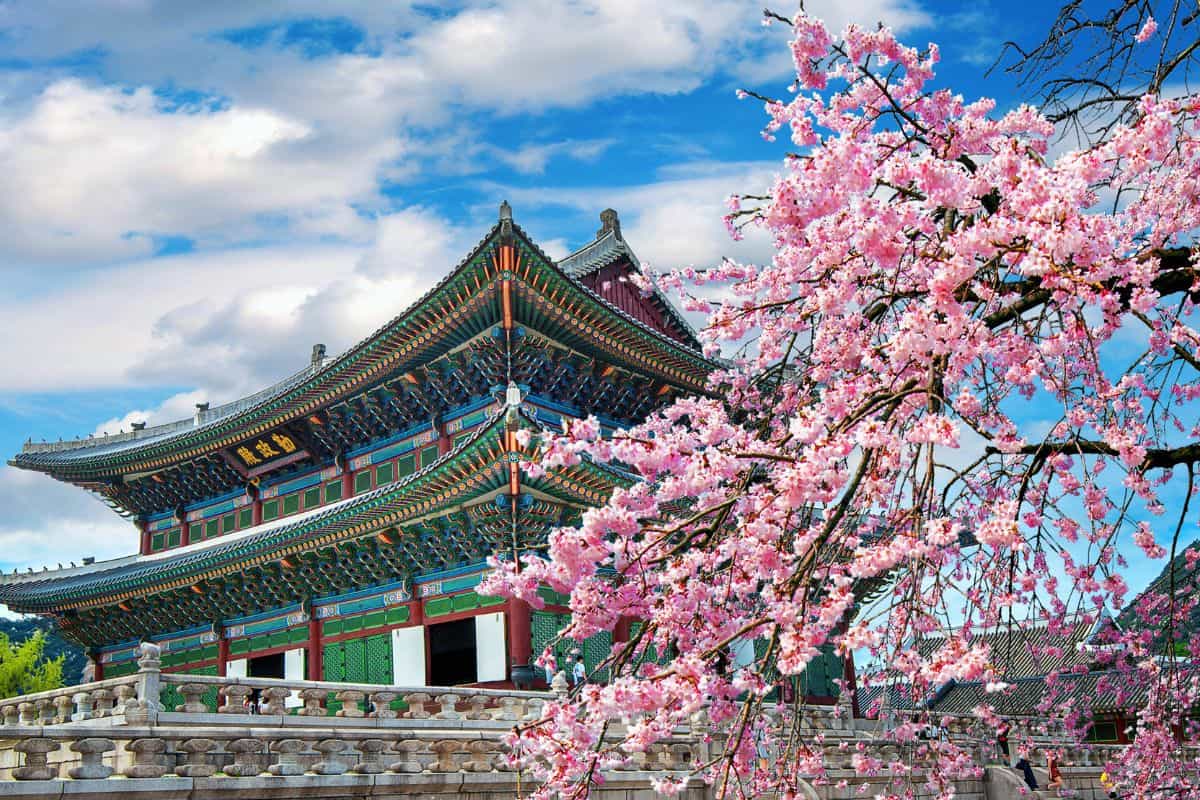
Jump to:
- 💮 March Weather in Korea
- 👨👩👦 Crowd and Costs in Korea in March
- 👒 What to Wear in Korea in March
- 📸 Places to Visit in Korea in March
- 🎊 Korean Festivals in March
- ✅ Korean Public Holidays in March
- 🐙 Korean Foods to Try in March
- 📝 Korea Itinerary for March
- 🧐 Exclusive Spring Tours for March
- ❓ Frequently Asked Questions
- 💬 Comments
💮 March Weather in Korea
As March arrives, travelers to Korea will feel the last bits of winter's chill, especially in places like Pyeongchang, where the snowy scenery is still beautiful. In the north, areas like Songnisan National Park can see temperatures drop below freezing, while Seoul usually sits around 3°C—so don't forget your warm coat.
If you head south to Busan and Jeju Island, you'll notice it gets a bit warmer, with temperatures ranging from 4°C to a comfy 9°C. March is a great time for winter sports or enjoying the fresh snow before spring arrives.
Even with the cold, March brings warmer days, with Seoul averaging 4°C, which is 6 degrees warmer than February. Daytime highs reach about 9°C, though nights can drop to -2°C, so layering your clothes is key.
The month also sees more rain, averaging 47mm, with a 20% chance of showers. With about 12 hours and 34 minutes of daylight, travelers can look forward to around 6 hours of sunshine each day, though clouds may take over later in the month.
As wind speeds ease and the air stays dry, it's a great time to explore Korea's rich culture and stunning views. Also don't miss out on trying traditional spring delicacies like hwajeon (flower pancake) and jjukkumi (baby octopus) during your visit.
👨👩👦 Crowd and Costs in Korea in March
March is a great time for travelers to visit South Korea as tourism starts to pick up, but it remains nicely uncrowded. Unlike the busy cherry blossom season during April in Korea, popular attractions are easier to access while you enjoy the beauty of spring.
Early in the month, with Korean students just back in school on March 2nd and cooler weather keeping some tourists away, you'll find the crowds are at their lowest. As it warms up, a few more visitors arrive, but overall, March offers a peaceful experience.
For budget travelers, March is also a smart choice. Prices for accommodation, transportation in Seoul, local foods, and entertainment stay low, giving you great value before the usual spring price hike.
You can enjoy the festive season with fewer crowds and lower costs, making exploring South Korea’s rich culture and beautiful landscapes easier. In short, March is an ideal time to enjoy the beauty of South Korea in spring without the hassle of large crowds and high prices.
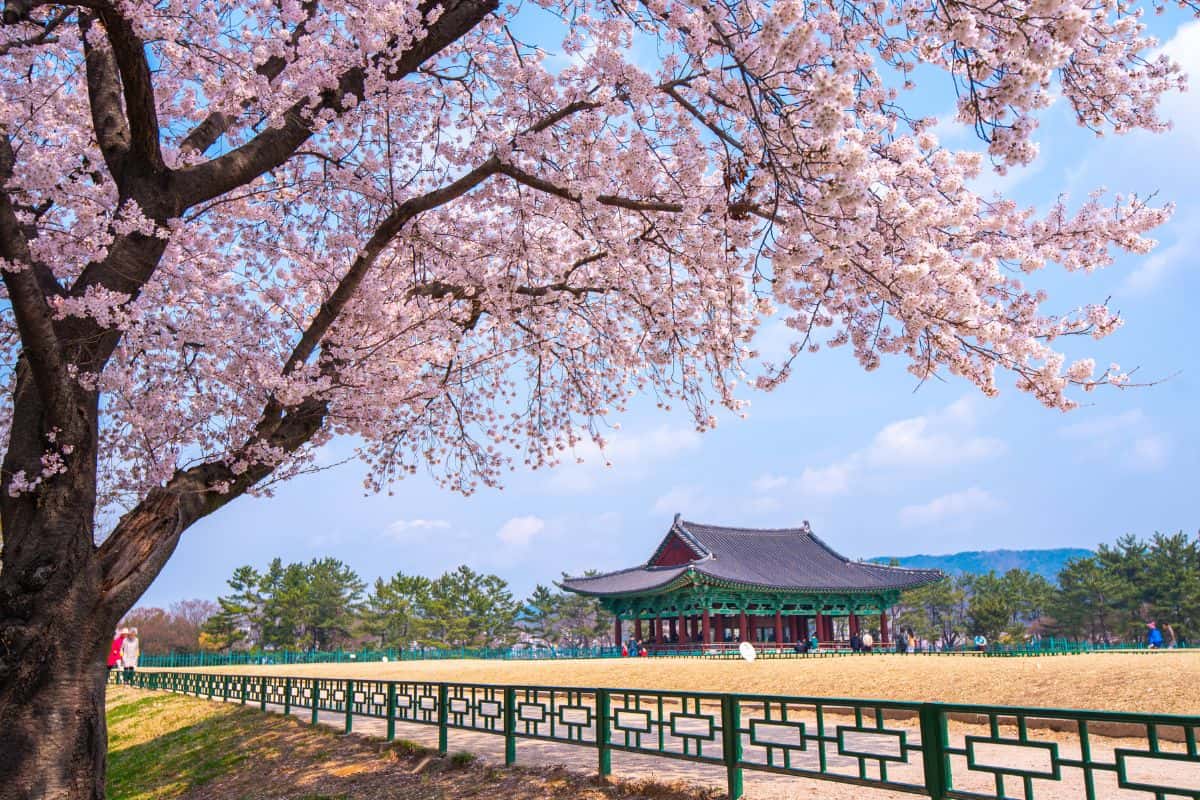
👒 What to Wear in Korea in March
- Layered Clothing: Due to changing weather and frequent rainfall, layering is essential to adapt to varying temperatures.
- Warm Jacket: A warm jacket is crucial in early March, with fleece styles offering comfort, practicality, and multiple pockets since there very occasionally can still be snow.
- Long Pants: Opt for long pants to stay warm during the cooler days.
- Long-Sleeved and Shirts: These can serve as a basic essential; lighter options are ideal for layering.
- Light Silk Scarf: A versatile accessory that can function as a neck warmer at night or a headband during the day.
- Reebok Sneakers: Comfortable sneakers are preferred over sandals, as temperatures can still be too cool for open footwear until late May.
- Face Mask: Wear a mask to protect against yellow dust and pollution, especially if you have allergies or air sensitivities.
📸 Places to Visit in Korea in March
Samcheok Ocean Railbike
For a unique adventure, try the Samcheok Ocean Railbike along the beautiful East Sea coastline. It's Korea's only ocean railbike spot, featuring a stunning 5.4-kilometer route filled with amazing views of black pines and interesting rock formations.
As you pedal along the path close to the shore, you can enjoy the refreshing sea breeze; it's perfect for families, friends, and couples looking to make lasting memories. What makes the Samcheok Ocean Railbike special is its magical tunnel, where riders are treated to a fun display of lights and lasers, making you feel like you're moving through an underwater world.
Whether you're enjoying a sunset ride or a daytime adventure, the railbike offers a perfect mix of fun and scenic beauty, making it a must-visit for anyone wanting to explore Korea's natural wonders.
Juknokwon Bamboo Forest
Nestled in Damyang, Juknokwon Bamboo Forest spans about 160,000 square meters, offering a peaceful escape from daily life. Established in May 2003, this massive bamboo grove invites visitors to stroll along its rock steps while gentle breezes rustle the tall bamboo, creating a calming atmosphere perfect for relaxation.
The soothing sounds and cool shade help travelers forget their worries and enjoy nature's beauty. As you explore Juknokwon, don’t miss the chance to sip on bamboo leaf tea made from the forest's own bamboo leaves. This refreshing Korean tea is a lovely way to end your visit.
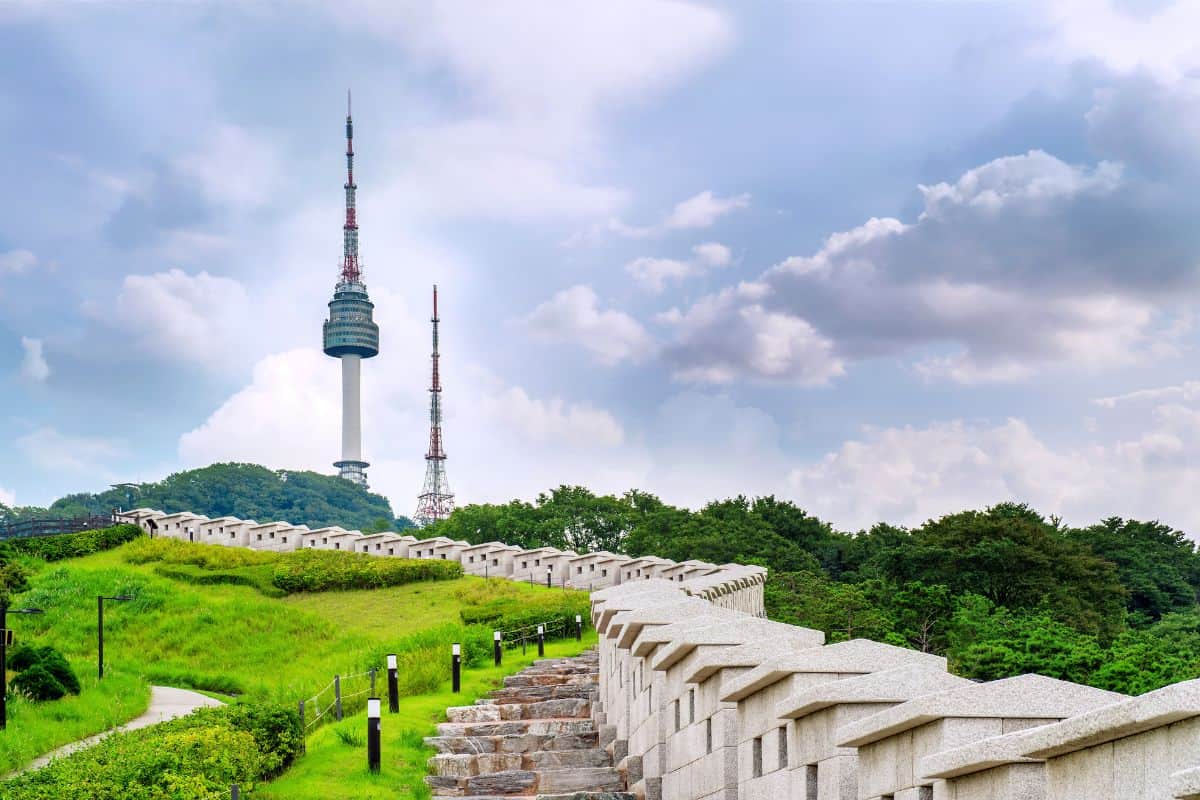
Namsan Seoul Tower
Namsan Seoul Tower is Korea's first multipurpose tower, and has been a national symbol for over 40 years. It combines a broadcasting tower with a beautiful observatory, making it a favorite spot for locals and visitors alike.
The view from the observatory offers stunning sights of the lively Seoul skyline, letting guests enjoy the city's beauty from all angles. It’s a must-visit for anyone wanting to experience the heart of the bustling city.
Adding to the charm of Namsan Seoul Tower is the Namsan Cable Car, which has been operating since 1962. The ride gives travelers a great view as they head up the mountain, and is an easy way to get up to the tower without a hike. Shuttle buses from downtown Seoul also make it easier to reach this iconic attraction.
Bukhansan National Park
Bukhansan National Park, located in the northeast of South Korea, covers about 30.86 square miles (79.92 square kilometers) of stunning scenery where granite peaks meet lush forests.
The highest point is Baekundae at 2,744 feet (836.5 meters), followed by Insubong at 2,659 feet (810.5 meters) and Mangnyeongdae at 2,623 feet (799.5 meters). Visitors can enjoy amazing views from hiking trails and lookout points, making it a perfect spot for nature lovers.
The park also has historical sites like the Bukhansanseong Fortress, built in the 1700s, and several ancient Buddhist temples—only 6 of the original 13 still stand today, showcasing Korea's rich culture. While not famous for wildlife, you might spot water deer, wild boar, playful chipmunks, and squirrels. Birdwatchers will love the variety of birds, from woodpeckers to songbirds and raptors.
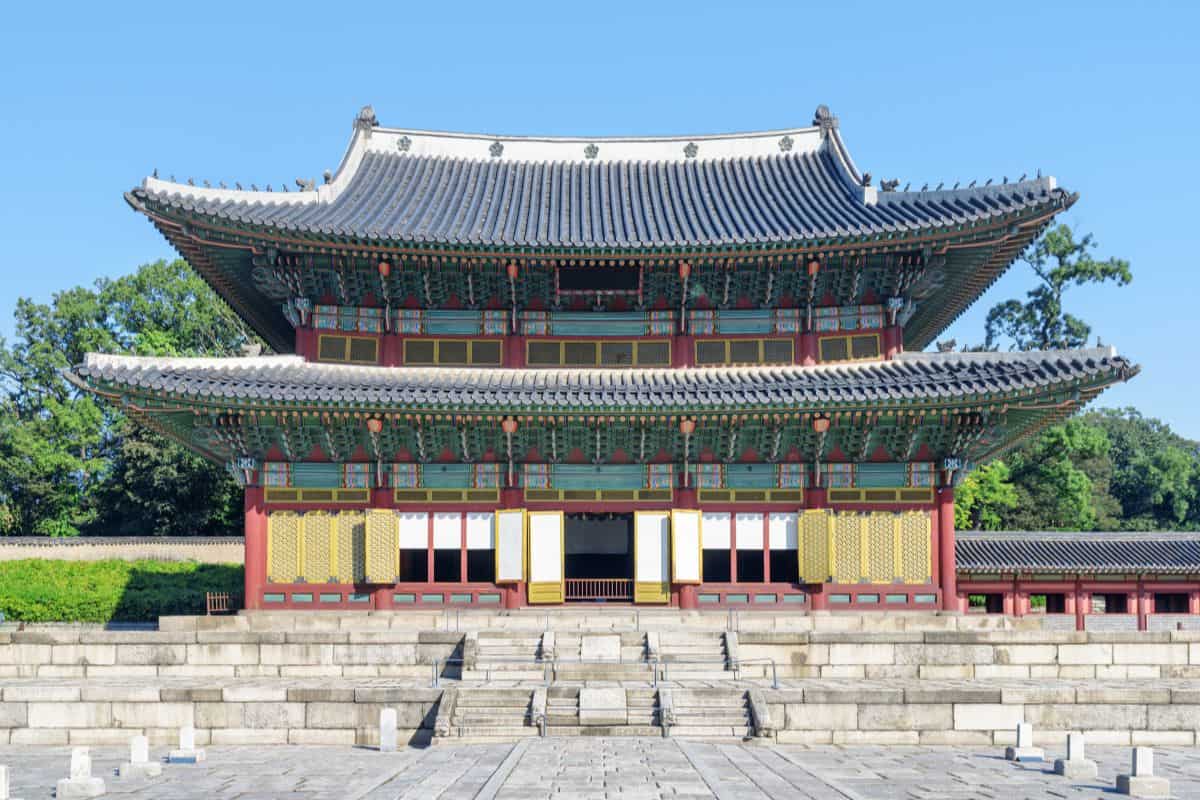
Changdeokgung Palace
Located in the heart of Seoul, Changdeokgung Palace showcases Korea's rich history and beautiful architecture. This UNESCO World Heritage site was founded in 1405 and expanded to include the stunning and incredibly popular Secret Garden in 1463 under King Sejo, blending governance and living spaces.
The palace has a fascinating history, as well; it was destroyed during the Japanese invasion in 1592 but rebuilt in 1610, making it the first royal palace restored. For 250 years, it was the main home for Korean kings until Gyeongbokgung Palace took over in 1867.
Visitors can explore carefully designed buildings from the reigns of Kings Injo to Sunjo, including Ongnyucheon Stream, Gyujanggak Library, and the peaceful Aeryeonji Pond.
Known as Donggwol or the East Palace, Changdeokgung was built to harmonize with nature and is considered a prime example of traditional Korean palace architecture. The palace is historically significant; Emperor Sunjong lived here after becoming king, and important events, like the signing of the Korea–Japan Treaty of 1910, took place at Heungbokheon.
Deoksugung Palace
Deoksugung Palace, a registered Historic Site, takes you on a fascinating journey through Korea's royal history. Originally built as the home of Grand Prince Wolsan, the older brother of King Seongjong during the Joseon dynasty, it wasn't always a royal palace.
It officially became a palace in 1611 under King Gwanghaegun, who renamed it Gyeongungung Palace. Over time, Deoksugung shifted from being an official palace to being a temporary residence. In 1907, it got its current name, Deoksugung, meaning "palace of virtuous longevity."
Although many of the original buildings are gone, the palace still feels regal. Visitors can enjoy peaceful walks along its paths, reflecting on its grand past. The beautiful scenery, featuring traditional Korean architecture and a charming stone wall, invites everyone to dive into a rich mix of history and culture.
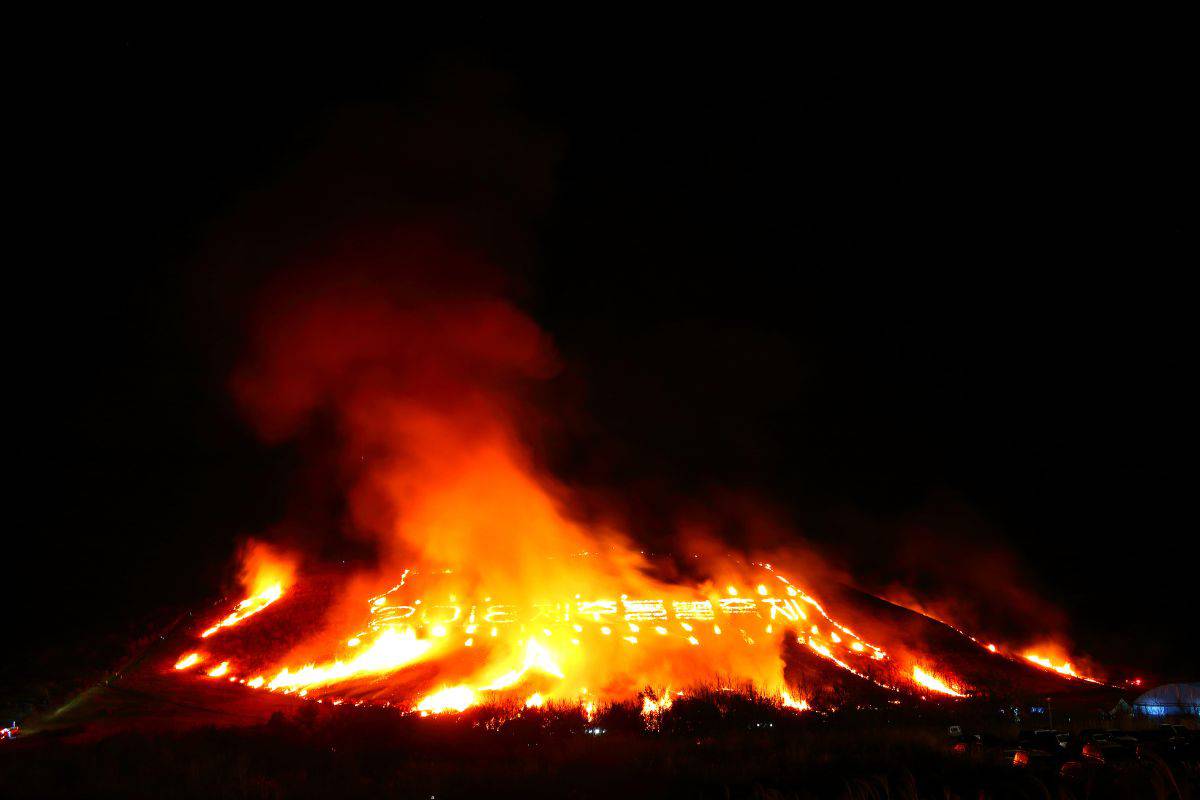
🎊 Korean Festivals in March
Fire Festival in Jeju
The Jeju Fire Festival, held every March, celebrates the arrival of spring on this beautiful island. This fun event honors Korean farming traditions with a ceremonial field burning, symbolizing renewal and fertility. Set against the stunning Saebyeoloreum Volcanic Cone, visitors enjoy a spectacular display of bright reds and oranges lighting up the night sky.
The festival showcases Jeju's cultural ties to livestock care and creates a lively atmosphere for everyone. Along with the captivating fires, there are many exciting activities to enjoy, like a media show, a torch march, and thrilling fire performances.
Food lovers will be happy to find food trucks offering local treats, adding to the festive spirit. As travelers join in the celebration, they connect with Jeju's rich culture, making the Jeju Fire Festival a must-see for anyone visiting in March.
Gwangyang Maehwa Festival in Gwangyang
Every March, the Gwangyang Maehwa Festival invites visitors to enjoy the stunning beauty of plum blossoms in full bloom. This lively festival, one of South Korea's first flower celebrations, happens in the first half of the month and features over 80 acres of beautiful plum trees.
Located by the scenic Seomjingang River at the foot of Jirisan Mountain, Seomjin Village, also known as Maehwa Village, is famous for its lovely white blossoms that look like fresh snow.
As people walk through the village, they can take in a breathtaking landscape that welcomes spring with vibrant flowers. During the festival, attendees can enjoy the beautiful views and learn about the region's farming traditions, where plum trees shine instead of more common crops.
The air is filled with the sweet smell of blooming flowers, making it a perfect spot for nature lovers and photographers. While tasting local treats and joining in cultural activities, visitors create unforgettable memories amidst the beauty of the plum blossoms.
The Gwangyang Maehwa Festival is a must-see for anyone wanting to experience the charm of South Korea's spring festivities.
Gurye Sansuyu Festival in Gurye
The Gurye Sansuyu Festival is a fun yearly celebration of the bright yellow flowers of the cornelian cherry tree, known as sansuyu. As spring arrives, visitors come to enjoy this beautiful display in the charming town of Gurye.
The festival features various activities that showcase both the lovely blossoms and local culture. Guests can check out exhibits displaying local products made from sansuyu Korean fruit, giving a taste of the region.
There are also exciting programs, including traditional music and dance performances that highlight Gurye's rich heritage. Visitors can join hands-on activities to connect with local traditions, while as the day ends, a stunning fireworks show lights up the night sky, wrapping up a joyful celebration.
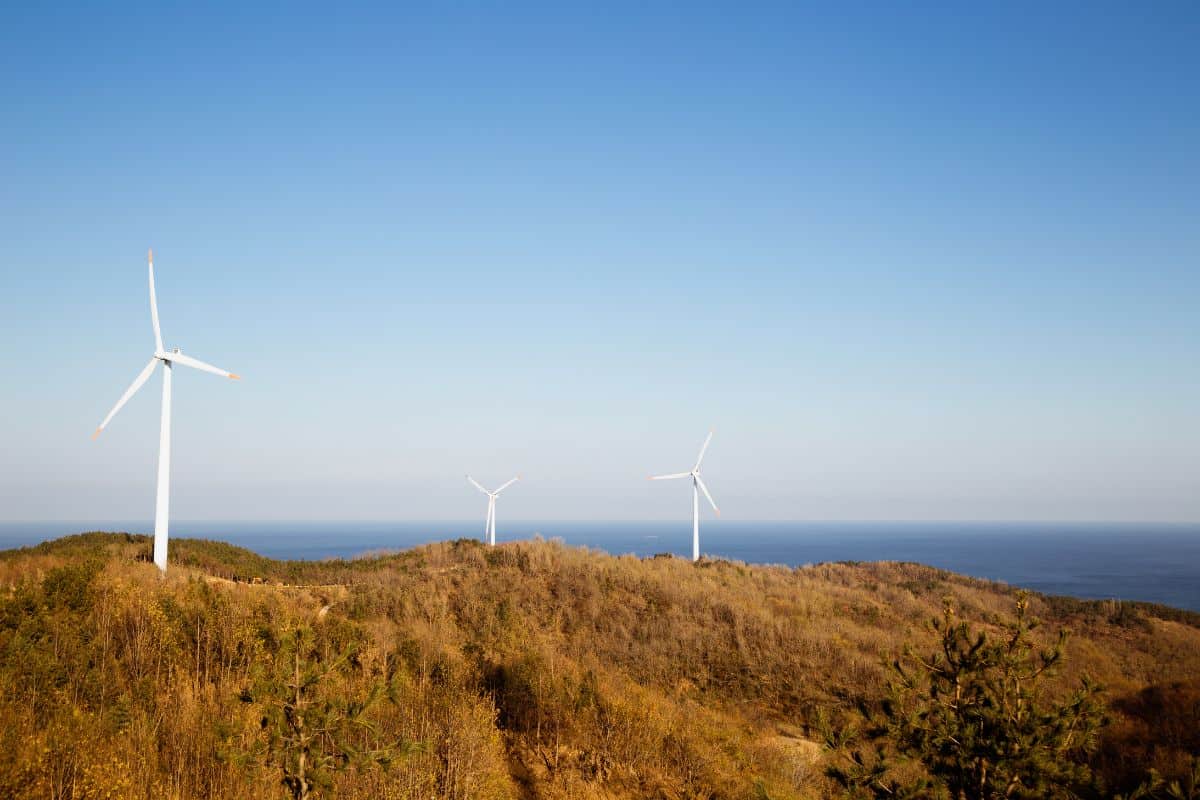
Yeongdeok Snow Crab Festival in Yeongdeok
Every March the Yeongdeok Snow Crab Festival turns the lovely coastal town of Yeongdeok into a fun celebration of its famous snow crabs, which were once served to royalty. This annual event attracts seafood lovers and curious visitors eager to enjoy these tasty treats.
One highlight is the Snow Crab Public Auction, where people excitedly bid on fresh catches. The busy snow crab market also offers local products and unique food experiences, so visitors leave with delicious souvenirs.
Festival-goers can dive into the local fishing culture by hopping on a snow crab fishing boat for a real taste of the trade and even try to catch their own crabs. For those who love to cook, the snow crab cooking competition is a great chance to show off skills against other food fans.
Throughout the event, everyone can taste a variety of snow crab dishes, from steamed treats to creative recipes that showcase this popular seafood.
Strawberry Festival in Nonsan
In the heart of Nonsan lies South Korea’s largest strawberry production area, known for its rich soil and clean environment. The annual Nonsan Strawberry Festival is held in March and celebrates this sweet treat and the region’s 90-year history of strawberry farming.
With half that time focused on large-scale production and shipping, the festival boosts the local economy and connects smaller nearby cities. This popular event is a highlight of Chungcheongnam province, attracting many domestic visitors eager to enjoy delicious strawberries and a lively atmosphere.
Festival-goers can participate in fun activities, like picking their own strawberries, and explore a variety of strawberry-based products including Korea strawberry milk. They can also savor tasty dishes featuring fresh, juicy strawberries.

✅ Korean Public Holidays in March
Independence Movement Day
Independence Movement Day, or Samiljeol, is an important day in South Korea, celebrated every year on March 1st. This day marks the anniversary of the March 1st Movement in 1919, when Koreans boldly declared their wish for freedom from Japanese rule.
If you're visiting South Korea during March, you'll find memorial ceremonies and special events across the country showcasing the patriotic spirit of its people.
Cities host parades, cultural performances, and educational activities that honor the sacrifices of those who fought for independence. It's a day filled with pride and reflection, and joining in local activities helps you understand the significance of this day in shaping modern Korea.
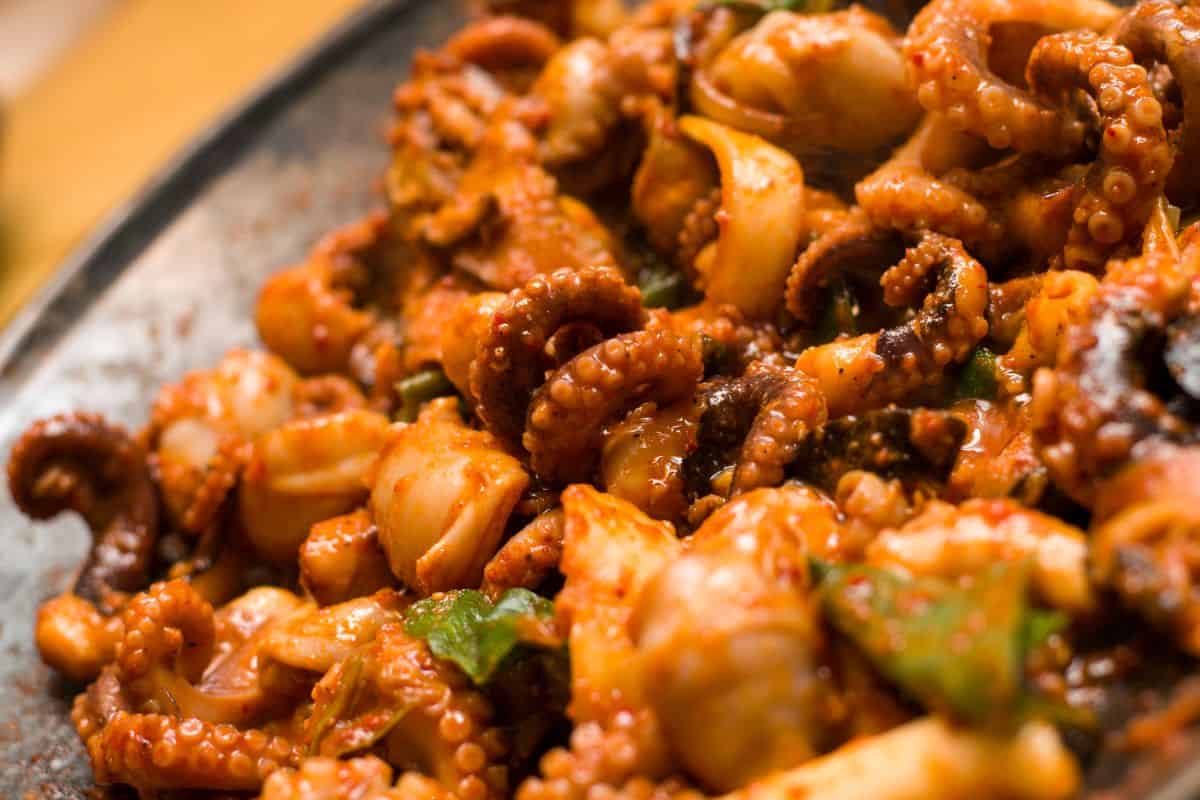
🐙 Korean Foods to Try in March
Jjukkumi
Travelers wanting to enjoy unique Korean food should definitely try jjukkumi (쭈꾸미), a tasty dish made with baby octopus. Despite the name, jjukkumi are a small species of octopus that's actually fully grown.
These tender octopuses are loved for their special flavor, which is a mix of subtle saltiness and a hint of sweetness. This combination makes them a favorite in many Korean dishes, especially in spring when they are freshest.
Visitors to Korea in March will find jjukkumi featured on menus everywhere, offering a great chance to enjoy this seasonal treat. You can have jjukkumi grilled, stir-fried, or in spicy stews, often served with different seasonings and side dishes that boost its unique taste.
Exploring local markets and restaurants that focus on jjukkumi shows just how popular and versatile this dish is in Korean cooking, making it a must-try for anyone looking for an authentic taste of Korea.
Daege-jjim
If you're keen to explore more Korean food, daege-jjim (대게찜), also known as eundaegu-jjim, is a must-try dish. Made from blackmouth angler, a type of cod, it's either steamed or boiled with fresh veggies.
The "jjim" cooking method uses marinade, letting the flavors blend together for a rich taste that delights your palate. This dish is especially popular in cooler months, making it a great choice for March visitors who want some warming comfort.
You can find daege-jjim on many menus across Korea, from busy city spots to cozy local street food stalls. Its colorful look and fragrant aroma make it a feast for the senses. Pair it with various side dishes to experience the depth of Korean cuisine and its focus on fresh ingredients.
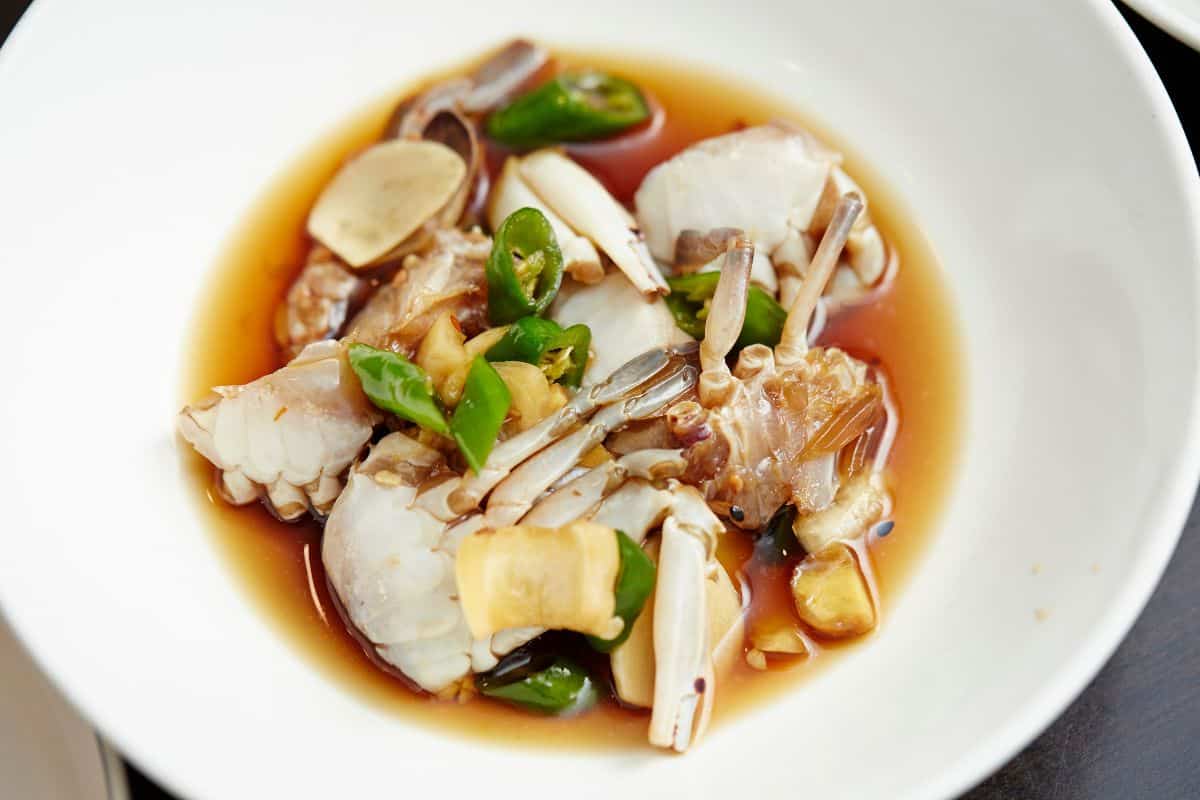
Hwajeon
If you want to enjoy the beauty of Korean spring, try hwajeon (화전; 花煎), or flower cake. This traditional pan-fried rice cake is made from glutinous rice flour and honey, giving it a sweet and chewy taste that captures the spirit of spring.
You can find hwajeon at various festivals, especially Samjinnal and for Buddha's Birthday in May, when it’s even more special.
With edible flower petals, it looks pretty and smells lovely, making it a treat for both your eyes and taste buds. Finding hwajeon in Korea lets you join in on seasonal celebrations while enjoying this unique snack.
Street vendors and local cafes often serve it with delicious teas, perfect for relaxing and taking in the sights. Enjoying hwajeon among the cherry blossoms in Seoul is a memorable experience connected to Korean culture.
Ganjang Gejang
For an unforgettable food adventure, travelers should try ganjang gejang (간장게장), a classic Korean dish that turns raw crabs into a tasty treat. Marinated in a flavorful soy sauce brine, this dish showcases the crab's freshness and delivers a strong umami flavor.
The name ganjang means soy sauce, and gejang means crab, giving it the fun title of "soy sauce crab."Nicknamed a "rice thief" (밥도둑), ganjang gejang is famous for making every bite of rice even better, often leading diners to eat more than they planned.
Visitors to Korea can find this dish in many local restaurants, usually enjoyed with others at a communal table. To really enjoy this delicacy, it's best to have ganjang gejang in a lively atmosphere, surrounded by locals and fellow travelers, making it a highlight of any food journey in the country.
Sannakji
If you're looking for an exciting food experience, sannakji (산낙지) is a dish you can't miss. This traditional Korean meal uses Octopus minor, or nakji, and is prepared in a unique way that really stands out. The octopus is served while it's still wiggling, showing just how fresh it is—a fun and lively presentation!
To enjoy sannakji at its best, visit a busy local restaurant where people gather. It's typically served with different dipping sauces that highlight the soft texture and light ocean flavor of the octopus.
If you want to dive into Korean food culture, look for this dish at seafood restaurants or local markets, where you'll get to enjoy a meal that's a treat for both your eyes and your taste buds.
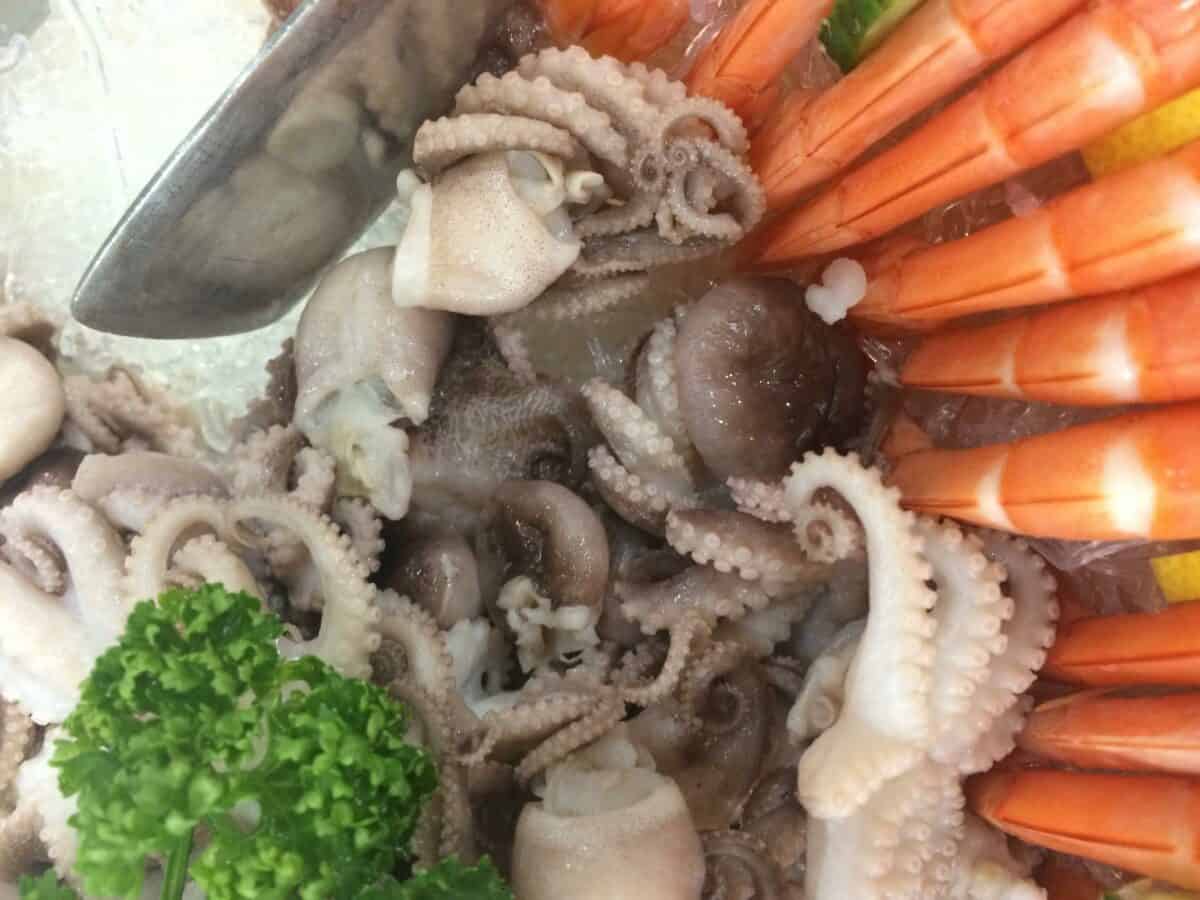
📝 Korea Itinerary for March
Day 1: Arrival in Seoul
Begin your adventure in Seoul, where you can check into your accommodation before exploring the vibrant city. Start by visiting the iconic Namsan Seoul Tower, which provides stunning panoramic views of the cityscape.
After enjoying the sights, head back down to savour a delicious meal featuring local delicacies like ganjang gejang at a nearby restaurant. Embrace the bustling atmosphere and immerse yourself in the delightful flavours that Korea has to offer.
Day 2: Historical Exploration
Dedicate your second day to delving into Korea's rich history by touring Changdeokgung Palace and Deoksugung Palace. Changdeokgung, a UNESCO World Heritage site, showcases beautiful traditional architecture and serene gardens.
After your royal exploration, make your way to Deoksugung Palace, where you can witness the changing of the guard ceremony. In the evening, take some time to relax at a local café and sample more traditional dishes.
Day 3: Nature and Adventure
On your third day, escape the city and venture to Bukhansan National Park for an invigorating day of hiking. Numerous trails cater to all skill levels, and you can enjoy the scenic views and natural beauty that surround you.
After a fulfilling day on the trails, treat yourself to a hearty meal at a local restaurant, perhaps indulging in some sannakji to celebrate your outdoor adventure.
Day 4: Soothing Bamboo Forest
For a tranquil experience, head to Juknokwon Bamboo Forest on your fourth day. Wander through the serene paths surrounded by towering bamboo stalks and enrich your senses with a calming atmosphere.
This peaceful setting is perfect for a leisurely stroll and photo opportunities. Then, find a café nearby for a refreshing drink as you take time to reflect on your journey.
Day 5: Scenic Railbike Ride
Wrap up your itinerary with a visit to the Samcheok Ocean Railbike. Experience the unique opportunity to cycle along the scenic coastline while enjoying breathtaking ocean views. The ride is both relaxing and exhilarating, offering the perfect finale to your trip.
Take in the beauty of Korea's shores before enjoying one last meal, perhaps featuring some of your favorite dishes from the past days or even a full spread of Korean BBQ.
🧐 Exclusive Spring Tours for March
Experience the enchanting beauty of Korea with Trazy Tours, offering an exciting itinerary that includes visits to Nami Island, Petite France, the Italian Village, and the Garden of Morning Calm. This is the same tour my best friend did when she came to visit me in Korea, and she LOVED it!
It's available every day except for on Tuesdays and Saturdays from September to November, ensuring flexibility for travelers. This immersive excursion lasts approximately 10 hours, and participants are encouraged to book in advance by 8:00 AM KST the day before their chosen date. Ticket confirmation is instant.
Tours cater to a minimum of one person and offer convenient meet-up locations, including Hongik University Station Exit 4, Namsan Yejang Bus Parking Lot, near Myeongdong Station Exit 1, and Dongdaemun History & Culture Park Station Exit 10.
For those seeking a more serene escape, the Seoraksan National Park and Naksansa Temple tour is available on Mondays and Fridays, with additional days open from September to December. This tour lasts about 11 hours and promises breathtaking natural landscapes and cultural insights. Similar to the other tours, early booking is required, with instant confirmation.
The package includes round-trip transportation, admission fees, and an English/Chinese-speaking tour guide for a seamless travel experience. However, participants should plan for lunch and personal expenses during the journey.
❓ Frequently Asked Questions
March is considered early spring in South Korea, so the weather can be quite unpredictable. It could range from downright chilly to very warm temperatures, with occasional rain showers. It's best to pack layers and an umbrella just in case. Additionally, I recommend you check the weather forecast just before your trip to get a better idea of what to expect.
As mentioned, it's best to pack layers for your visit in March. This means bringing a mix of long and short-sleeved shirts, sweaters, and a light jacket or coat. Closed-toe walking shoes are also recommended, as occasional rain showers may still come down. It's also advisable to bring a scarf and gloves if you plan on visiting higher altitude areas such as Seoraksan National Park.
Yes - one of the most well-known customs is removing shoes before entering a home or certain establishments such as temples, though it's also important to be respectful and avoid showing public displays of affection, especially between opposite genders. Familiarize yourself with basic Korean etiquette, such as using both hands when giving or receiving items and refraining from pointing with your finger.

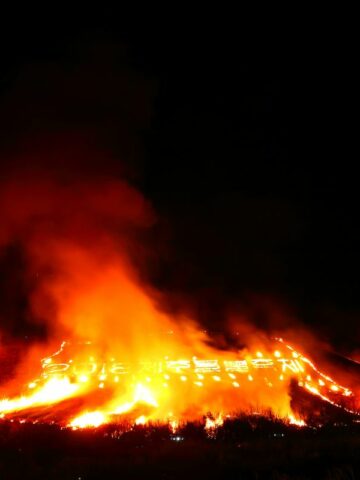
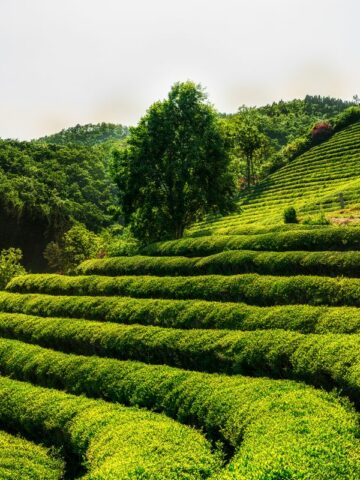
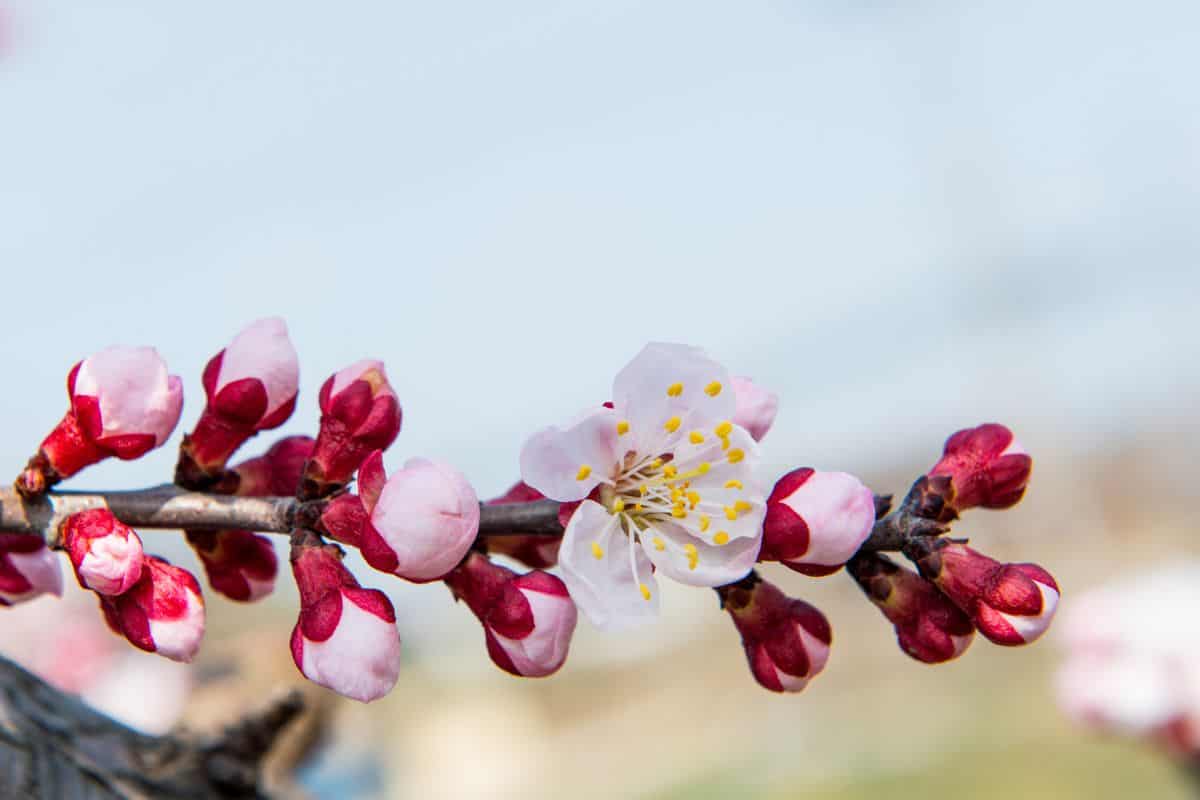
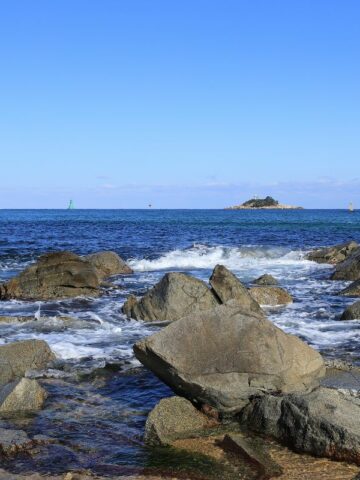
Comments
No Comments